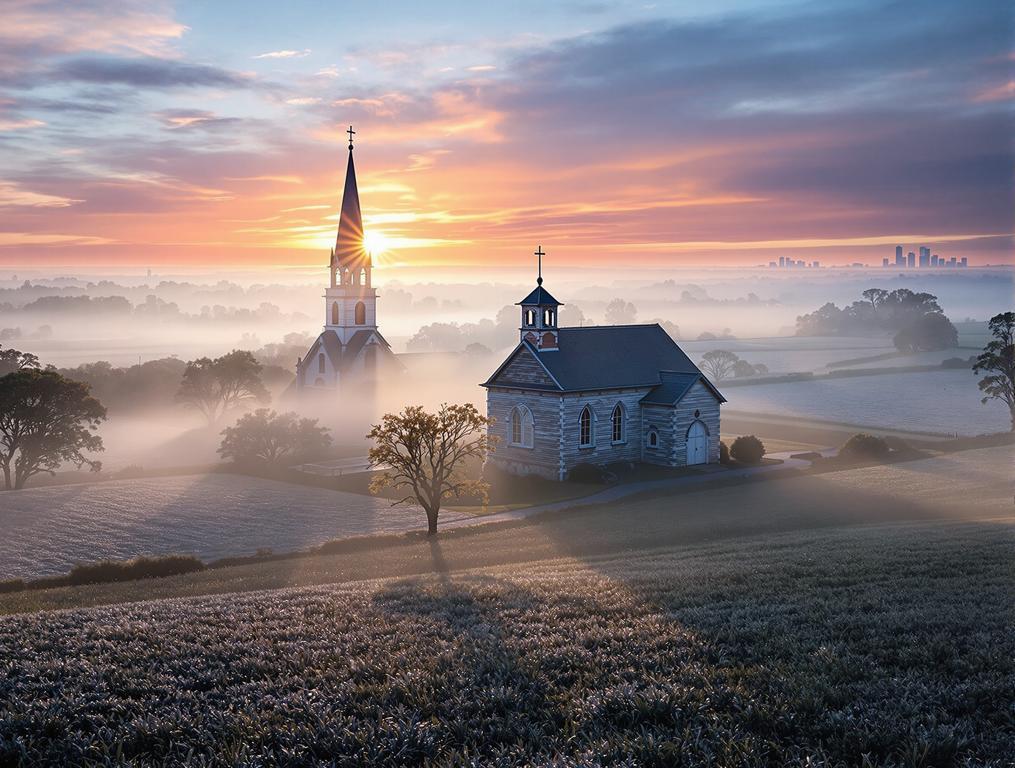The morning fog still clings to the fields as I drive past the “Welcome to Iona” sign – so small you might miss it entirely. Just 73 kilometers southeast of Melbourne’s gleaming skyscrapers, I’ve entered a world that feels impossibly removed from city life. Home to exactly 240 residents according to the latest census, this tiny rural hamlet sits in Melbourne’s shadow yet remains almost completely unknown to the 5 million urbanites living just an hour’s drive away.
My rental car bumps along a quiet country road as the silhouette of St. Joseph’s Catholic Church emerges through the morning mist. In the distance, sheep outnumber humans by what must be hundreds to one. The thermometer in my car reads 7°C – a crisp winter morning in Victoria’s farmland.
A 240-resident farming community hiding in Melbourne’s backyard
Iona exists in fascinating statistical contrast to its surroundings. With just 240 people spread across rolling farmland, you could fit Iona’s entire population into a single Melbourne apartment building. Yet it maintains a distinct identity centered around its historic church and agricultural traditions.
Driving through the scattering of farmhouses and paddocks that constitute “town,” I’m struck by the stillness. Winter here brings a different pace than the frantic summer harvest seasons. Frost-tipped grass crunches underfoot as I explore the roadside, and my breath creates clouds in the morning air.
Unlike other rural Victorian towns that have embraced tourism and development, Iona remains stubbornly authentic. You won’t find souvenir shops, tour buses, or even a dedicated visitor center. What you will find is working farmland, generational knowledge, and a community that values privacy and tradition.
This level of rural seclusion is particularly remarkable given that Melbourne’s outer suburbs creep ever closer. Towns like Perenjori in Western Australia maintain similar small-town characters but require long journeys to reach. Iona offers the same peaceful escape within day-trip distance of Australia’s second-largest city.
St. Joseph’s Church: A century of quiet devotion
The brick structure of St. Joseph’s Church stands as the community’s historical anchor. Built in the 1940s to replace an earlier structure, it represents a century of rural Catholic heritage. Unlike grand cathedrals that draw international visitors, this modest church serves its small congregation without fanfare.
The building’s simplicity belies its importance to local identity. On this winter morning, sunlight filters through simple windows, illuminating wooden pews worn smooth by generations of the same families. There’s no tour guide, no entrance fee – just quiet history and occasional services.
“Some weekends we’ll have more people at church than live in the entire town. Families come back from Melbourne, maintaining their connection to the land. It’s like this invisible thread that never breaks, no matter how far they go.”
This persistence of community through decades of rural demographic changes makes Iona different from smaller South Australian towns like Furner, which have innovated with renewable energy to survive. Iona instead relies on its proximity to Melbourne, allowing residents to maintain rural lifestyles while accessing urban amenities.
Winter in Iona: Australia’s quiet alternative to crowded summer escapes
While Australians might fly halfway around the world to experience villages like Saint-Zacharie in Provence, Iona offers similar rural charm within 90 minutes of Melbourne’s CBD. The winter months provide exceptional tranquility, with frost-covered farmland creating a uniquely Australian rural winter aesthetic.
Access is straightforward via Princes Highway and Nar Nar Goon-Longwarry Road, though GPS navigation is recommended as signage is minimal. The best times to visit are early mornings when mist hangs over the fields, or late afternoons when golden winter light bathes the countryside.
Unlike Mazama, Washington with its nearly identical population that balances tourism with preservation, Iona remains largely undiscovered. Visit in winter and you might be the only outsider in town – a level of solitude increasingly rare in our connected world.
Driving back toward Melbourne as the winter sun begins to set, I reflect on how places like Iona maintain their identity despite the pressure of nearby urban expansion. My photographer wife Sarah would love the light here, the way it plays across the frost-tipped fields. Some locations reveal their magic through grandeur and spectacle, but Iona’s power lies in its quietness – a tiny community of 240 souls continuing centuries-old farming traditions just beyond the city limits, reminding us that distance isn’t always measured in kilometers.
